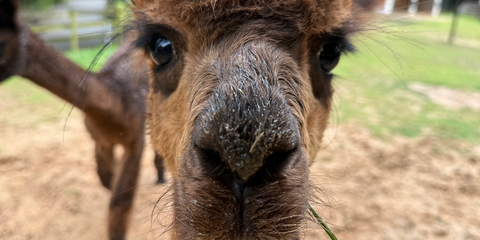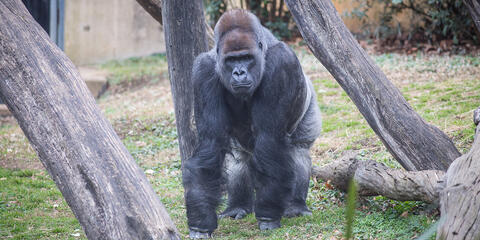Physical Description
A flamingo's plumage is a distinctive pink color with black flight feathers along the edges of the wings. It has a slender body and very long legs, a long, flexible neck and a small head. The flamingo's bill has a characteristic downward bend.
Compared with its long legs, a flamingo's feet are relatively small. The front three toes are webbed, and the back toe is either tiny or missing altogether. Flamingos walk easily and can run when threatened.
Size
The American flamingo is one of the largest species of flamingo. An average adult is 5 feet (1.5 meters) tall and weighs 4-8 pounds (1.8-3.6 kilograms).
Native Habitat
American, or Caribbean, flamingos are distributed throughout the Caribbean Islands and along the northern coast of South America. They usually live in the shallows of salt or brackish water or alkaline lakes.
Lifespan
American flamingos have a lifespan of about 40-60 years.
Communication
Breeding displays occur in large groups with, at times, thousands of individuals opening their wings or lifting up and turning their heads in one vast, synchronized movement. Theses group displays seem to bring all the birds of the colony to the same readiness to mate, to ensure rapid, synchronized egg laying as soon as conditions allow.
Food/Eating Habits
These flamingos eat algae, small seeds and aquatic invertebrates such as brine, fly larvae, shrimp and mollusks. Flamingos usually feed while wading in shallows, using their feet to stir up mud on the bottom. They put their head to the surface (so that the bill is upside-down, with the tip pointing backward) and sweeps their head from side to side.
By a rapid action of the tongue, they pump water in and out of the slightly opened bill. The way in which the upper and lower parts of the bill fit together, combined with the comb-like plates on the bill's edges, make it a useful tool for sieving food from water.
Social Structure
Flamingos are very social birds with some flocks numbering in the thousands.
Reproduction and Development
Flamingos have no set breeding season, because breeding is highly linked to rainfall levels, which must be high enough to provide an adequate food supply. Flamingo pairs are monogamous and both parents help build a volcano-shaped nest, where they lay a single egg that they then incubate for about 28 days.
Chicks hatch covered with white down, taking several years and molts to become pink. The parents care for their young for the first week or two. Once a young flamingo is able to walk and swim, it joins a creche, or group of young flamingos. These groups can include up to 300,000 birds and are still fed by their parents but guarded by an unrelated adult.
Conservation Efforts
While flamingos are an abundant bird species, they are threatened by habitat loss due to mineral mining and human disturbance. About 80,000-90,000 American flamingos, concentrated in four major breeding colonies, remain in the wild.
Help this Species
- Practice ecotourism by being an advocate for the environment when you’re on vacation. During your travels, support, visit or volunteer with organizations that protect wildlife. Shop smart too! Avoid buying products made from animals, which could support poaching and the illegal wildlife trade.
- Share the story of this animal with others. Simply raising awareness about this species can contribute to its overall protection.
- Are you a student? Did you love what you learned about this animal? Make it the topic of your next school project, or start a conservation club at your school. You'll learn even more and share the importance of saving species with classmates and teachers, too.
Animal News

Zoo Welcomes Alpacas ‘Rainstorm’ and ‘Coffee Cup’


